Fixed Capacitor-Definition, Types, and Applications
A fixed capacitor is a capacitor with a fixed capacitance that does not vary with the applied voltage. It stores electric charge. It consists of two conductive plates separated by an insulator or dielectric.
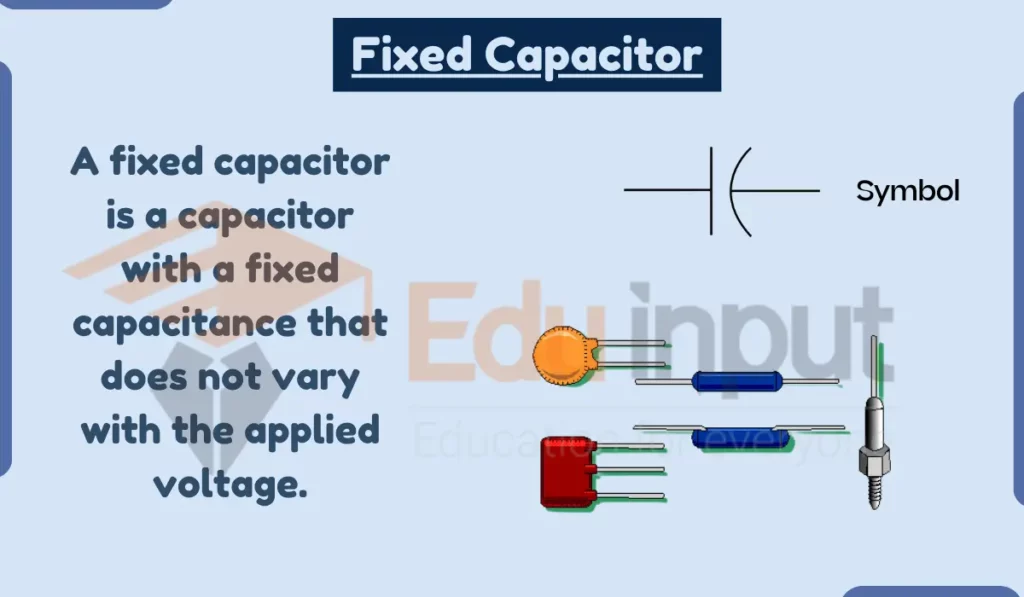
When connected to a DC voltage source, an electric field develops across the plates causing opposite charges to collect on each plate. The capacitor stores energy in the form of an electric field between the plates.
Types of Fixed Capacitor
There are 5 main types of fixed capacitor:
1. Ceramic Capacitors
Ceramic capacitors are made using ceramic materials like titanium dioxide or barium titanate for the dielectric. They are inexpensive to produce and have high volumetric efficiency, meaning they can provide high capacitance values in a small physical size.
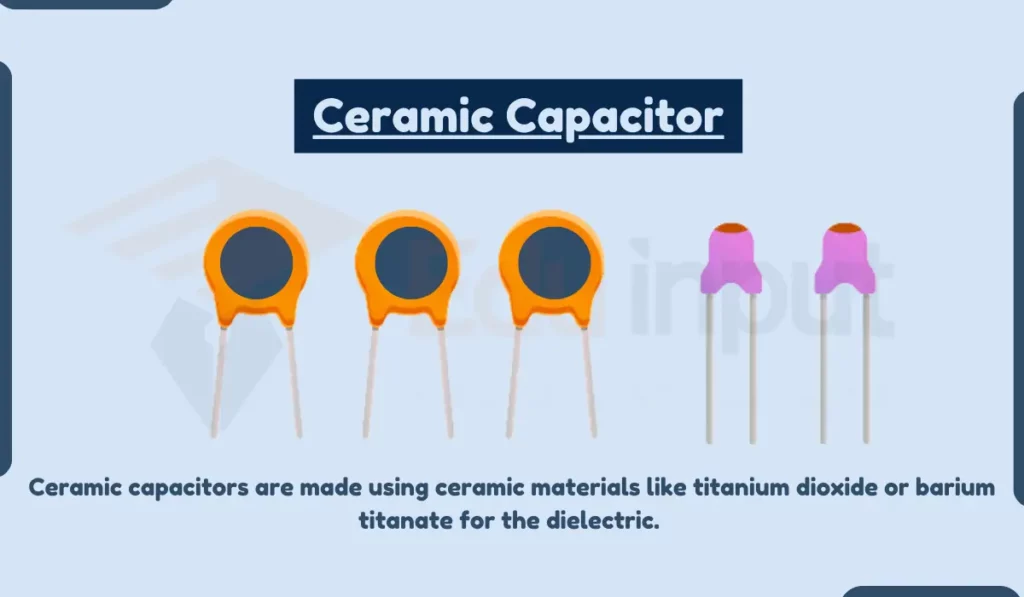
Common types of ceramic capacitors include multi-layer ceramic capacitors (MLCCs) and ceramic disc capacitors. MLCCs are constructed with alternating ceramic dielectric and electrode layers stacked to form a monolithic chip. The stacked layers connected in parallel give greater capacitance in a small footprint. Ceramic disc capacitors have a single ceramic dielectric layer between two electrode plates in a disc-shaped package.
Ceramic capacitors have low inductance and low ESR (equivalent series resistance) which makes them suitable for high frequency applications. They also operate well across a wide temperature range. Ceramic capacitors are versatile and used in many general-purpose applications for coupling, decoupling, bypassing, and filtering.
Applications of Ceramic Capacitors
Ceramic capacitors are used in:
- High-frequency tuning and filtering (radios, filters, oscillators, etc.)
- Snubbers (resistor-capacitor (RC) snubber networks to suppress voltage transients in power electronics)
- Bypassing and charge pumps (local charge storage for IC power supply bypassing and charge pump circuits)
- Capacitive touch sensors (buttons, sliders, touchscreens, etc.)
- RF coupling and DC blocking (transmitters, receivers, amplifiers, etc.)
- Integrated circuits (chip capacitors made with ceramic dielectric are integrated into ICs including RF, mixed-signal, analog, and some digital ICs)
- EMI/RFI filtering
2. Film Capacitors
Film capacitors use thin plastic film like polyester, polypropylene, polystyrene, or Teflon as the insulating dielectric material. Compared to ceramics, plastic films can provide more stable capacitance across variations in temperature and frequency.
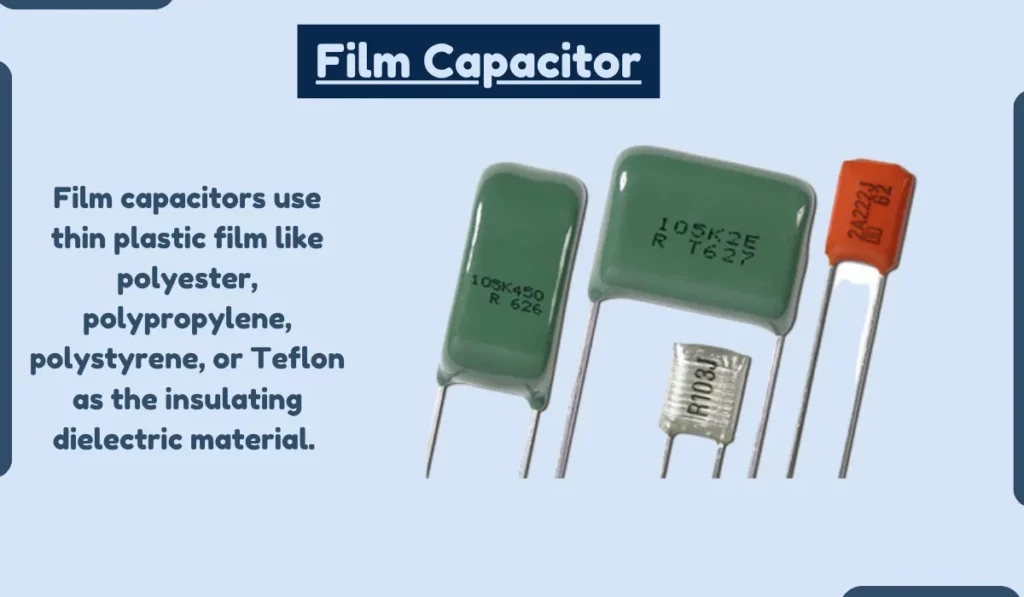
Film capacitor electrodes are typically metalized films or foils. They are rolled up or stacked to increase capacitance. Film caps are not polarized and work for AC and DC applications. They are commonly used for general-purpose coupling, decoupling, and bypassing applications in electronic circuits.
Applications of Film Capacitors
Here are some applications of film capacitors:
- Power supplies (smoothing and filtering)
- Filters (frequency-selective circuits)
- Oscillators (generating electronic signals)
- Timers (creating delays)
- Coupling (passing AC signals)
- Decoupling (blocking AC signals)
- Bypassing (shunting high-frequency noise to ground)
- Snubbers (suppressing voltage spikes)
- Motor starting (providing a high current pulse to start a motor)
- Power conditioning (regulating voltage and current)
- Pulsed power applications (delivering high-power pulses in a short period of time)
- High-current inverters and drives (converting DC power to AC power)
3. Power Film Capacitors
Power film capacitors are a type of film capacitor designed for higher voltage and temperature operation. They use self-healing film dielectric like polypropylene which can recover from breakdown of flaws in the dielectric. This makes them suitable for high-power applications.
Power film capacitors are commonly used for motor starting, power conditioning, pulsed power applications, and high-current inverters and drives. Large power film caps can be immersed in oil for improved insulation.
Applications of Power Film Capacitors
Power film capacitors are a type of film capacitor designed for higher voltage and temperature operation. They are used in applications where high power and energy density are required, such as:
- Motor starting (Provide a high current pulse to start a motor)
- Power conditioning (Regulate voltage and current in power supplies and other high-power applications)
- Pulsed power applications (Deliver high-power pulses in a short period, such as in radar and lasers)
- High-current inverters and drives (Convert DC power to AC power in high-current applications, such as electric vehicles and industrial drives)
4. Electrolytic Capacitors
Electrolytic capacitors use an extremely thin insulating oxide layer as the dielectric, formed electrochemically on the surface of a metal anode made of aluminum or tantalum. A liquid or solid electrolyte surrounds the oxide layer acting as the second electrode.
The thin oxide dielectric gives electrolytic capacitors very high capacitance per volume. However, they are polarized and sensitive to voltage reversals. Electrolytic capacitors are commonly used for filtering and buffering in power supplies due to their large capacitance and small size.
5. Supercapacitors
Supercapacitors, also known as ultracapacitors or electric double-layer capacitors, use electrostatic double-layer charge storage to achieve massive capacitance values. They consist of two porous electrodes immersed in an electrolyte, separated by an ion-permeable membrane.
Supercapacitors can store much more energy than normal capacitors. They can deliver bursts of high power and rapidly charge and discharge. They are often used alongside or in place of batteries for energy storage and burst power delivery. However, supercapacitors normally cannot replace batteries for long-term energy storage.
Also Read:
| Electrostatics | Supercapacitor | Parasitic capacitance | |
| Energy stored in a capacitor | Electric Potential | Electric Field | |
| Electric flux | Permittivity | Electric charge | |
| Capacitance | Static electricity | Capacitive coupling |

 written by
written by 

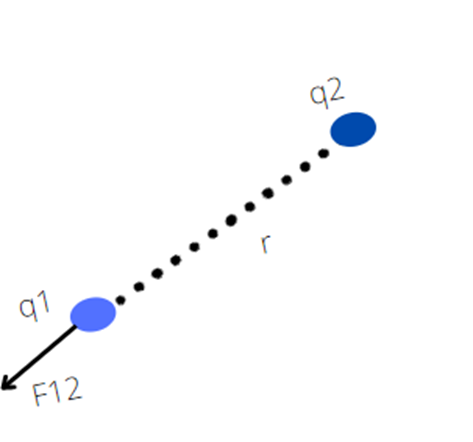
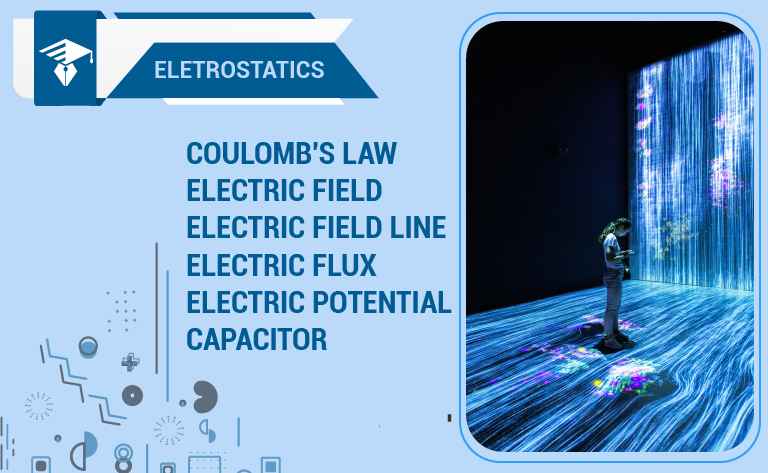


Leave a Reply